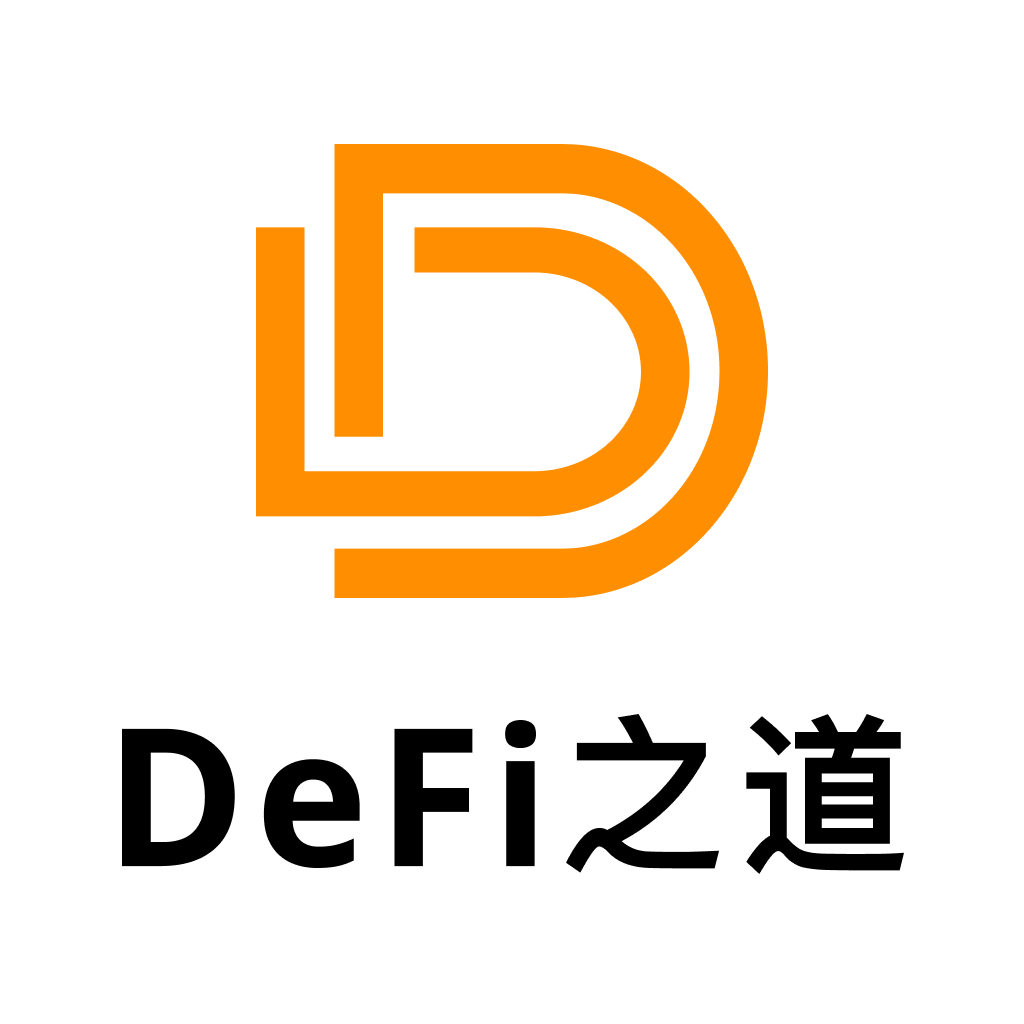Messari:7种扩容产品如何为Polygon构筑护城河?
原文来源:Messari
原文编译:DeFi之道
摘要:
Polygon 是一家区块链互联网公司,专注于通过零知识(Zero Knowledge)技术组合扩展以太坊。
该公司正在积极开发七种扩展解决方案,从各种 ZK Rollup 到侧链,再到软件开发工具包 (SDK) 等工程基础设施。
随着基于 ZK 的扩展解决方案于 2022 年上线,Polygon 将从 DeFi、元宇宙、NFT 和游戏领域的 7,000 多个 dapp 生态系统中受益匪浅。
Polygon 的企业发展战略包括利用与风险基金的合作伙伴关系,管理自己的 NFT/游戏生态系统,以及运营一个负责寻找有前途的加密项目的内部投资基金。
Polygon 即将到来的里程碑包括与现有协议建立更多的业务合作伙伴关系,以及重新设计 MATIC 代币以更好地适应公司的未来计划。
Polygon 的全球 Web3 生态系统极大地受益于印度蓬勃发展的 Web3 技术人才。 Polygon 提供开发人员培训、与印度理工大学(IIT) 等一流大学的合作以及开展黑客马拉松,以扩大开发人员人才基础并在印度和国外孵化高质量的 Web3 初创公司。
加密行业在过去两年里取得了长足的进步。 2020 年夏天,DeFi 原语在所谓的“DeFi Summer”中脱颖而出。 第二年,NFT 开始流行——首先是作为个人资料图片,然后是社区代币,现在还有音乐和游戏等创收用例。
自然,对区块链的兴趣与日俱增的用户激增。 整个智能合约网络的总价值锁定(TVL)从大流行开始以来的 5 亿美元上升到两年后的 1700 亿美元。 更重要的是,随着人们对元宇宙、资产所有权以及无银行账户的银行业务的进一步兴趣,加密货币的增长预计只会继续。
尽管投资者都从加密货币的成熟中受益,但该行业的扩张并非没有成长的痛苦。 臭名昭著的是,当前的区块链基础设施难以支持用户的增长。 交易吞吐量放缓,网络费用飙升。 以太坊尤其难以处理提交到其区块链的交易负载。 根据 Etherscan 的数据,平均gas成本从 2020 年 3 月的 10 gwei 跃升至两年后的 60 gwei——这还没有考虑到 2021 年gas价格一直徘徊在 150 甚至 200 gwei 左右的时间段,这凸显了改进基础设施的必要性。
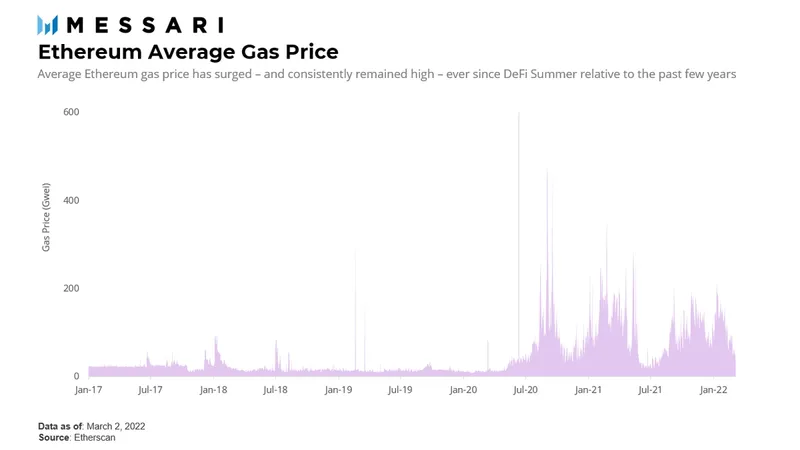
因此,我们在投资者中看到的一个新兴共识是需要一个跨链生态系统。 换句话说,一个单一的区块链可能不足以支持用户需要的一切。 通过将工作分配给多个实体,单个区块链所需的总工作量将会减少。 如果投资者是对的,建立一个跨链世界是实现首批十亿用户所需规模的方式。
本报告将重点介绍以太坊跨链扩展工作的一个主要组成部分:马蹄(Polygon Technology)。 本报告的关键部分包括该公司概况、对 ZK Rollups 的简短介绍、Polygon 的项目生态系统以及该公司即将推出的路线图。
一个多链以太坊世界
Polygon Technology,即广为人知的 Polygon,正在为区块链基础设施(特别是以太坊生态系统)构建一系列平台。 随着网络扩大其用户和应用程序基础,其产品旨在支持以太坊的发展。 值得注意的是,Polygon 对以太坊的特别关注反映了该公司对网络作为未来跨链范式中心的核心信念。
从更大的角度来看,Polygon 在我们应该称之为区块链即服务行业的竞争。 与 Starkware、Arbitrum、Loopring 和 Matter Labs 等竞争对手一起,这些初创公司创建了旨在通过增加网络吞吐量和降低交易成本来增强区块链可扩展性的解决方案。
目前,区块链扩展缺乏一刀切的答案,这意味着每个初创公司的解决方案——无论是Optimistic Rollup、零知识汇总(ZK Rollups)还是其他替代方案——在当前生态系统中都有一席之地。这种竞争性研究工作是 Polygon 的联合创始人 Mihailo Bjelic 过去所说的“百花齐放”。
Polygon 始于 2018 年,是 Bjelic(正在试验 Plasma rollups)与 Jaynti Kanani、Sandeep Nailwal 和 Anurag Arjun 的共同努力,后三人一直致力于另一个可扩展的区块链 Matic Network。当时,这个联合实体结合了几个产品:(1)由 Bjelic 开发的区块链 SDK 开发框架和(2)由 MATIC 代币提供支持的 Plasma rollup 和 Matic 侧链。不幸的是,区块链研究人员此后不久发现了数据可用性问题(后面会在报告中进一步讨论),导致 Plasma 被其他解决方案弃用。由此产生的一段时间让团队专注于 Matic 侧链、SDK 框架(后来重命名为 Edge),并寻找下一步的发展。
2021 年 2 月左右,该团队宣布将Matic Network 更名为其当前的 Polygon,并宣布其成为以太坊跨链中心的战略。 它的新目标是作为一家提供大量多链服务的公司。 提供一套新兴的产品将成为公司的新焦点,首先是从一开始就幸存下来的面向用户的产品:Matic Network,现在更名为 Polygon Proof-of-Stake (PoS)。
第一个产品:Polygon PoS 侧链
用户可能已经熟悉 Polygon PoS。 这个侧链已经存在近两年了。 它在 DeFi Summer 之前推出,并在 2021 年 5 月行业对去中心化应用程序的好奇心爆发时充分抓住了这个机会。
鉴于公司围绕第 2 层(Layer2)扩展所做的努力,关于 Polygon PoS 的技术分类已经做了很多工作。 我们认为,将这个PoS 链的当前迭代定性为第 1 层(layer1)侧链是一个重要的区别,主要归因于Polygon网络没有从以太坊节点继承安全性并拥有自己的一组验证器。 无论如何,对于寻求负担得起的交易成本的用户来说,这个兼容 EVM 的网络是一个值得探索的选择; 事实上,许多以太坊最受欢迎的 DeFi 平台,如 Aave、Curve 和 Uniswap,在这个PoS 链上提供服务,所需的 gas 成本只是在以太坊上的一小部分。
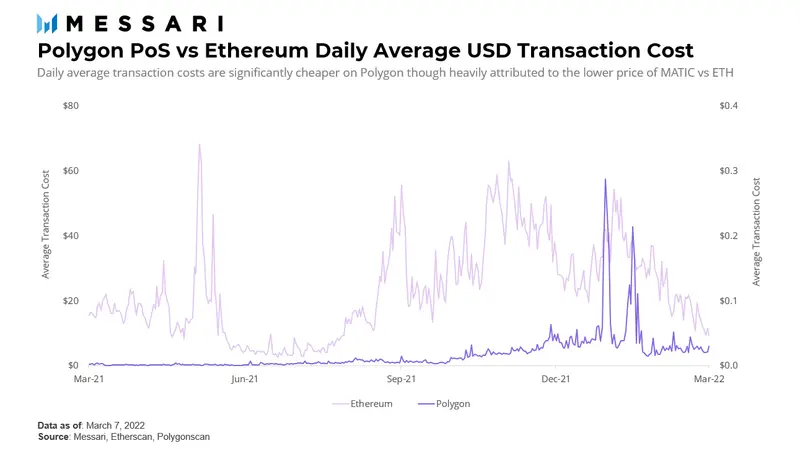
上图突出显示了 Polygon PoS 和以太坊之间平均交易成本的差异。 提供的数据令人震惊。 Polygon PoS 的平均成本仅为几分之一美元,而用户经常在以太坊上支付 20 美元或更多。 如果我们假设过去一年在这个PoS 链上完成的每笔交易都是在以太坊上进行的,那么用户将多支付近 150 亿美元的总交易成本。
现在,重要的是要知道这些数据受到 MATIC 相对于 ETH 的较低价格的影响。 如果将显示的成本调整为美元,这个PoS 链上的绝对成本低于以太坊,但以gas价格衡量,差异并不明显。 尽管如此,这个PoS 链对于想要避免当今以太坊高昂成本的用户来说仍然是一个很好的选择。 这也是为什么侧链处理的日常交易比以太坊多的一个重要原因——包括达到比以太坊多 4 倍的峰值——并且迄今为止已经吸引了 100+ 百万个钱包。
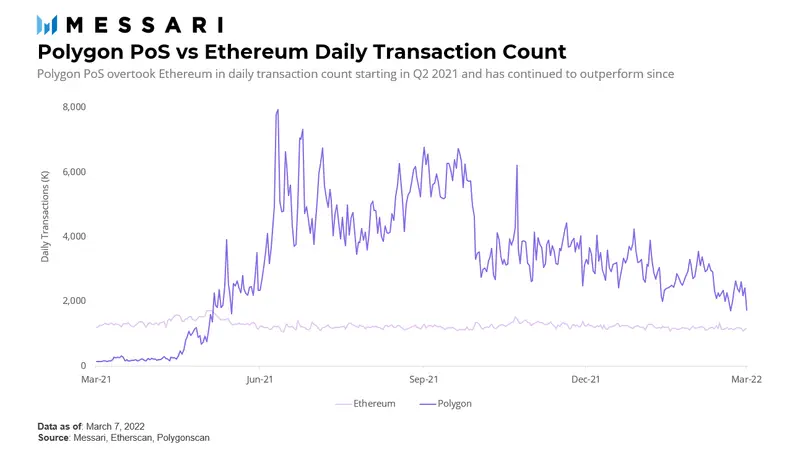
达到这些数字本身就是一个里程碑,但有人可能会说这只是 Polygon 更大抱负的开胃菜。 正如我们在上面看到的,侧链并没有像rollup这样的第 2 层解决方案一样提升区块链的扩展性。 这就是为什么 Polygon 将其资源用于第 2 层扩展和 ZK Rollups 的原因,目的就是寻找提高吞吐量和减少进行交易所需的 gas 量的解决方案。 由于领先的技术和加密货币本土投资者都选择在谈判桌前占据一席之地,Polygon的举措在整个行业引起了共鸣。 事实上,红杉资本印度、Andreeson Horowitz(A16z)、Tiger Global、Union Square Ventures(USV)、Galaxy Digital 等知名投资机构都支持该公司,表明对团队的信心并与公司的愿景保持一致。
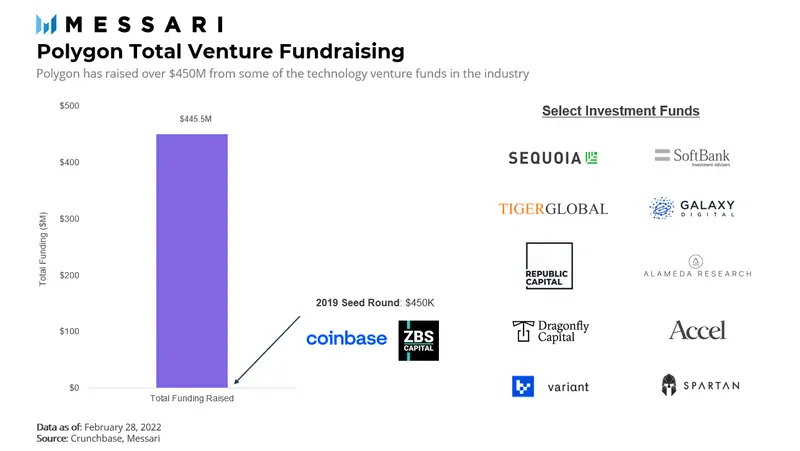
Polygon 的路线图包括七种产品解决方案的开发,从前面提到的 PoS 侧链到 L2 Rollups 以及其他区块链基础设施。 Polygon 总共承诺投入超过 10 亿美元来收购有前景的项目、投资研究并创建以太坊扩展生态系统。由于 Polygon 未来的很大一部分都与采用ZK 技术相关,因此在阅读报告的其余部分之前,首先了解它的工作原理非常重要。
零知识汇总(ZK Rollup)的简要入门
ZK Rollups 是 Layer-2 rollups 的两大类之一,与 Optimistic rollups 并列。 ZK Rollups 的核心理念依赖于加密证明来验证网络状态的变化,然后再将它们捆绑到以太坊区块链中。因此,有人将 ZK Rollups 称为“有效性证明”。这与 Optimistic rollups 形成鲜明对比,后者“乐观地”假设所有交易都是正确的,并让主网上的验证者在一段时间内检查欺诈交易。Optimistic rollups也称为“欺诈证明”。
让我们更深入地了解 ZK Rollups 的背后,看看它们为何如此有前途。 ZK Rollups 背后的基本前提是让第三方运营商一起批量交易,而不是单独验证每个交易——因此是“汇总”分类法——以增加网络的总处理能力。 区块链的状态变化以 ZK 证明的形式提交给主网上的验证者进行检查。 由于ZK特性,验证者可以通过证明确信所有提交的交易的有效性,而无需运行每个单独的交易。
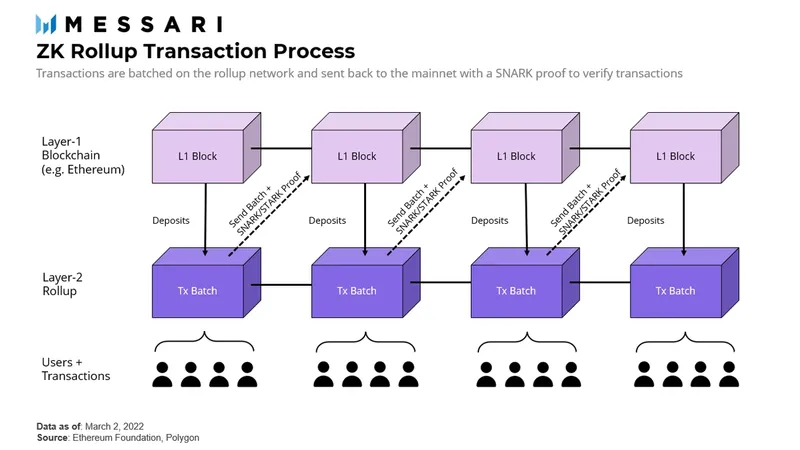
这个过程的一个重要部分是证明的健全性,它确保恶意证明者无法用虚假陈述欺骗验证者。为Rollup推断此属性很简单:如果要在区块链上接受所有批处理交易,它们必须是有效的。而且由于主网需要对每笔交易ZK进行验证,因此两条链之间几乎不需要交互,这使得gas费更便宜,整体上Rollup扩展更容易。
ZK Rollups 的另一个核心优势是网络能够立即验证交易。自动验证为用户带来了许多好处。最简单的是能够立即将资金从Rollup链转移到主网,而无需像使用 Optimistic rollups 那样等待其他人检查欺诈数据。
ZK Rollups 背后的技术很有前景,但为了公平起见,还值得一提的是,ZK Rollups 到目前为止还没有达到预期。这是一个重要的警告,因为迄今为止ZK Rollup 在以太坊主网上的推出还没用与 EVM 完全兼容。这就是为什么迄今为止几乎所有活跃的Rollup都使用欺诈证明。然而,一些研究计划已经接近,其中一些兼容EVM的ZK Rollups在 2022 年上半年在测试网上运行,包括 Polygon 拥有的那些。冒着听起来像是破纪录的风险,期待已久的日子似乎即将到来。
Polygon 的产品堆栈
Polygon 的产品套件包括上述 PoS 侧链和六个 ZK 支持的项目。 在这六个中,其中三个(Hermez、Miden 和 Zero)是直接的 ZK Rollup,另一个(Nightfall)是使用 ZK 加密的启用隐私的 Optimistic rollup,而其余两个(Avail 和 Edge)旨在帮助构建 ZK 和模块化基础设施。 下图列出了完整的产品套件,并根据共享的以太坊安全性对每个产品套件进行了分类。 低安全性产品类似于具有独立验证器的独立链,而高共享安全性产品是完全依赖于以太坊的完整第 2 层Rollup。 在下一节中,我们将从四个 ZK Rollup 开始介绍每个产品。
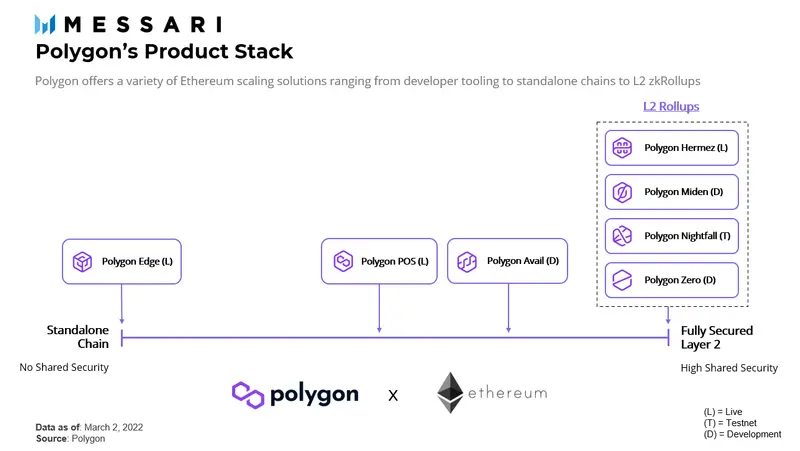
Polygon Hermez:去中心化的和活跃的
2021 年 8 月,Polygon 宣布以 2.5 亿美元收购 Hermez,这是迄今为止最大的区块链网络并购交易之一。该交易是通过公司代币库中的 Polygon 原生 MATIC 代币融资的。 Hermez 原生代币 (HEZ) 的先前持有者能够以 3.5 MATIC 代币对 1 HEZ 代币的比率将他们的代币兑换为 MATIC。收购的结果意味着 Polygon 将负责新成立的实体 Polygon Hermez。
在 Polygon 套件中的四个 ZK Rollup 中,Polygon Hermez 是使用最活跃的。这是第一个在以太坊主网上运行的开源去中心化 ZK Rollup(尽管没有兼容 ZK EVM),并且自 2021 年 3 月起向公众开放。用户将资金部署到 rollup 网络中,可以快速、廉价地在它们之间发送资金钱包作为转账和付款。 Polygon Hermez 每秒能够处理多达 2,000 笔交易,随着以太坊在 The Merge 之后的 2023 年某个时间实施分片,预计这一数字还会更高。无论如何,与一般的主网gas费相比,该产品目前的效果是降低了 90% 以上的交易成本。
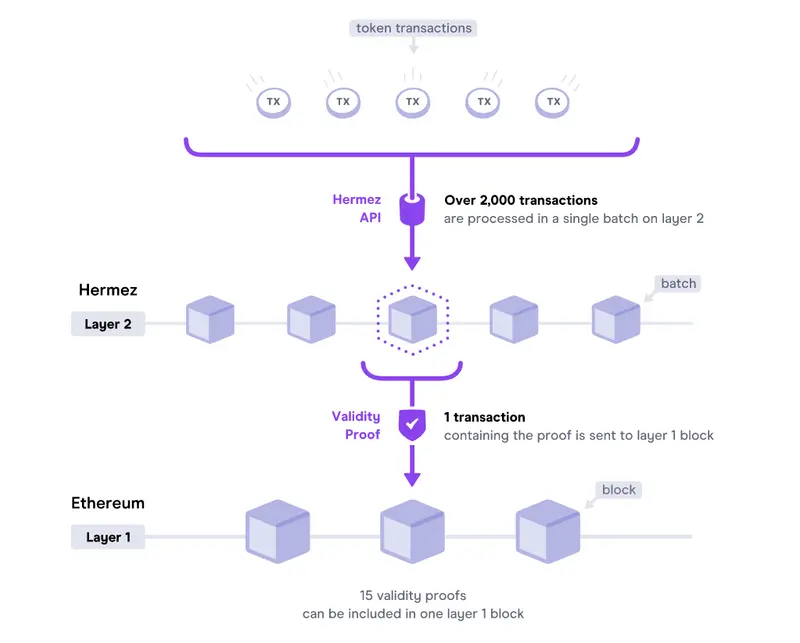
资料来源:Polygon Hermez
与 Polygon 的其他 ZK Rollup 产品一样,Hermez 也有自己的研究重点。 Hermez 高度重视去中心化。 它是唯一一个不需要中心化运营商的活跃第 2 层。 虽然去中心化排序器的使用所导致的中心化似乎微不足道,特别是在 ZK Rollups 的早期阶段,但长期影响可能是显着的。 正如 Polygon 团队所引用的那样,从中心化运营商向去中心化运营商的转变可能在运营和技术上都面临挑战,这让 Polygon Hermez 在竞争中处于领先地位。
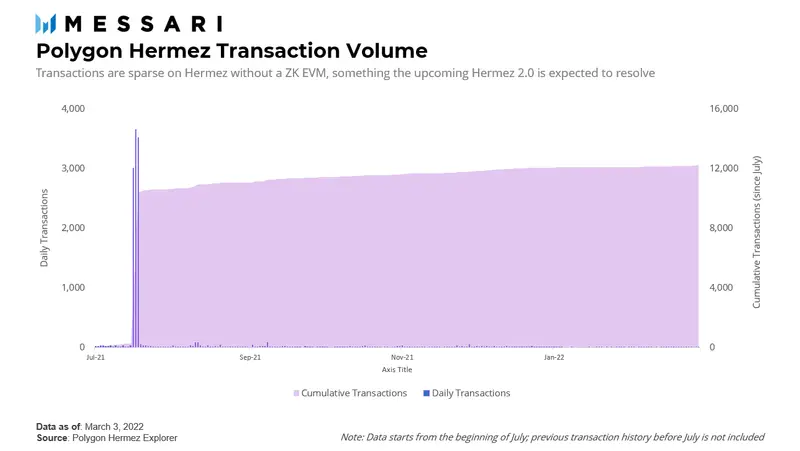
Polygon Hermez 未来将发布Polygon Hermez 2.0,这是一个结合现有 ZK Rollup 和 ZK EVM 实现的未来迭代。对后者的需求对于扩展以太坊至关重要,因为非 ZK EVM Rollup只能处理代币支付和代币转移。启用 ZK EVM 的区块链将允许网络直接在 rollup 上处理智能合约,并开辟另一条创新途径。最终产品预计将密切模拟原始 EVM 上可用的 50 - 70 条指令代码。坚持使用类似机器语言操作码的决定允许工程师将现有应用程序移植到Rollup中,或者在需要时轻松创建新应用程序。
预计在未来三个月(2022 年第二季度)的某个时候发布测试网。一旦测试结束,Polygon Hermez 2.0 的全面发布预计将在下个季度的某个时候到来。如果该时间表保持不变,ZK Rollup 爱好者将有机会看到这种扩展选项的形成。
Polygon Zero:一切为了速度
Polygon Zero 的前身是 Mir Protocol,这是一个由递归 ZK 证明提供支持的去中心化应用程序项目。 2021 年 12 月,Polygon 宣布收购 Mir Protocol 团队,寻求结合 Mir 项目与 Polygon 其他技术堆栈之间的协同作用。 这笔交易规模甚至比收购Hermez 更大。 对外宣布的价格约为 4亿美金,资金来自现金和 Polygon 的 MATIC 代币。
作为 Polygon 生态系统的一部分,Mir 团队的目标始终如一:打造世界上最快的 ZK Rollup。 与将大部分研究资源用于去中心化的 Polygon Hermez 不同,Polygon Zero 的目标是速度。 迄今为止发现的最佳解决方案是通过可扩展的 ZK-SNARK,也称为递归证明。
递归 ZK 证明通过增加任何时候可以处理的交易数量来加快速度。我们可以在这里做一个比较:现有的 ZK Rollup 通常需要大量的计算资源来为具有大量交易的批次生成证明;这对于需要支持通用应用程序的 ZK Rollup 来说是正确的,对于那些因需要 EVM 兼容性而放慢速度的应用程序更是如此。相比之下,高效的递归 ZK 证明允许将处理分配到更易于管理的并发工作块中。一旦每笔交易都经过验证,递归算法就会遍历并聚合所有证明,直到它们最终形成一个证明。想象这一点的最好方法是使用金字塔形状,其中基础层代表所有交易。随着每笔交易得到证明,它会向上发送,直到它们都在顶部达到顶峰。最终证明可以以比当前替代方案更快、更具成本效益的速度发送到主网。
Polygon Zero 能够通过 Plonky2 做到这一点。Plonky2是一个递归 ZK 证明生成器,能够每 0.17 秒生成一个 SNARK 证明,使 Plonky2 成为世界上最快的递归 ZK 证明器。
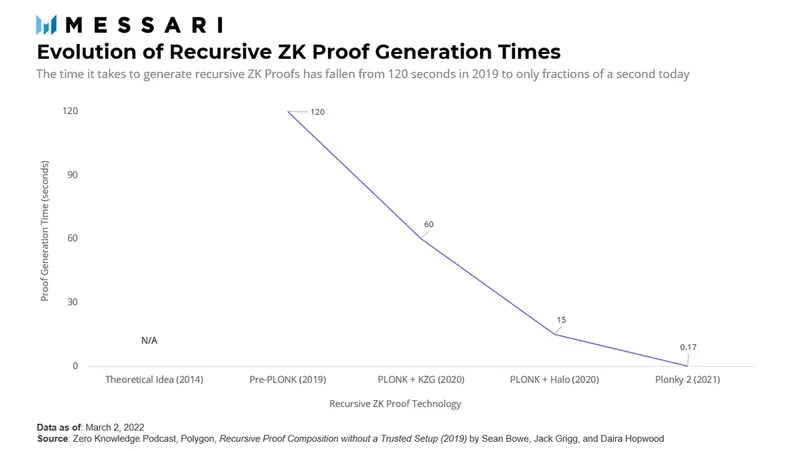
发明这项技术需要多年的研究。 递归零知识证明背后的实际应用从 2014 年才开始。2019 年,生成每个递归证明需要两分钟。 缓慢的证明生成显然使该技术对区块链扩展毫无用处。 2020 年,Plonky 的开发与其他一些技术相结合,将时间缩短到 15 秒。 Plonky2 将时间进一步缩短至 170 毫秒,使其成为世界上最快的递归 ZK 证明器。
也就是说,在 Plonky2 上线之前需要进一步的研究。 时间表尚未公布,但随着实现其他证明者突破,Polygon 团队将提供更多信息。
Polygon Miden:STARK 不是 SNARK
Polygon 的下一个 ZK Rollup 是 Miden。与大多数使用 ZK-SNARKs 的 ZK Rollup 不同,Miden 使用了另一种称为 ZK-STARKs 的证明。 STARK 代表“可扩展的透明知识论证”,而 SNARK 代表“简洁的非交互式知识论证”。鉴于 SNARK 和 STARK 的名称非常接近,因此学习 SNARK 和 STARK 的相似之处也就不足为奇了。它们的核心是隐私和扩展技术,为应用程序提供以更安全、更快的速度验证证明的能力。
它们的不同之处在于细节。 STARK 传统上不需要证明者和验证者之间的初始设置过程,尽管一些现代 SNARK 也找到了删除此过程的方法。 SNARK 无法匹配的是应对量子计算威胁的能力:SNARK 容易受到量子计算的攻击,而 STARK 使用的更精简的加密功能可证明是量子安全的。
使用 STARKS 的妥协是需要更大的证明,从而导致更高的 gas 成本和缺乏递归。实施后者可能是可能的,但目前尚未得到证实。对 SNARK 和 STARK 的进一步研究将继续为第 2 层证明打开新的大门。
如下图所示,交易Rollup过程类似于传统的 ZK Rollup,将通常的 SNARK 替换为 STARK。
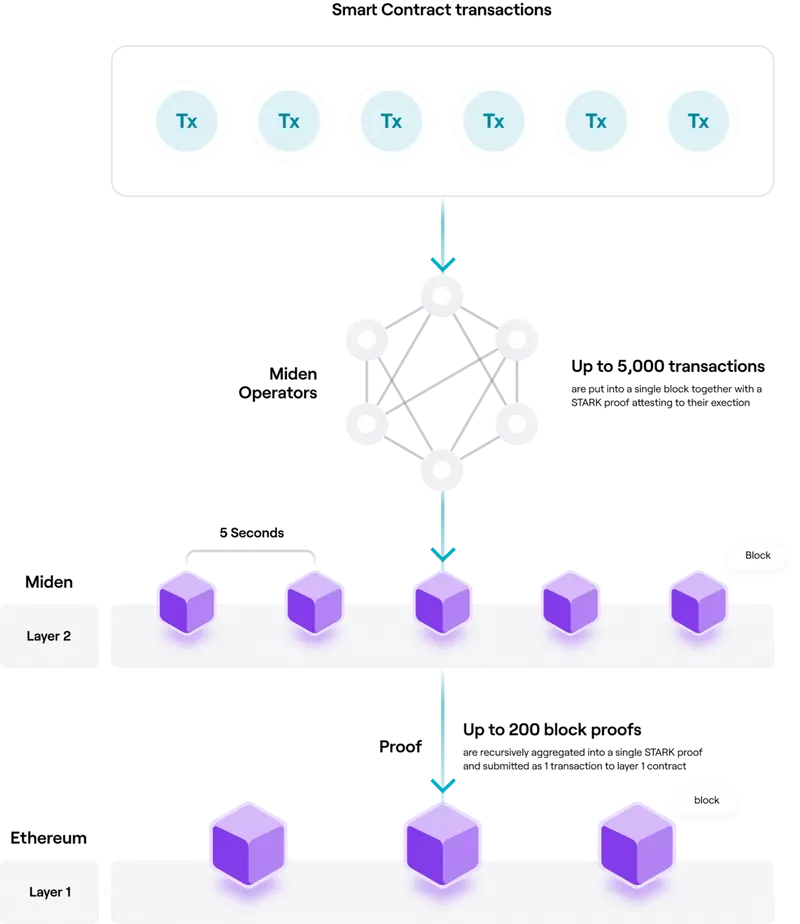
Miden 的优势在于创建了与 EVM 兼容的 ZK-STARK 的 Miden VM。 Miden VM 是一个通用的 ZK 虚拟机,它让开发人员可以利用该平台的完整图灵完备能力。 此外,还为开发人员提供了多语言支持。 这些语言,包括 Solidity、Move 和 Vyper,被编译成 Miden 汇编语言以供 VM 读取。
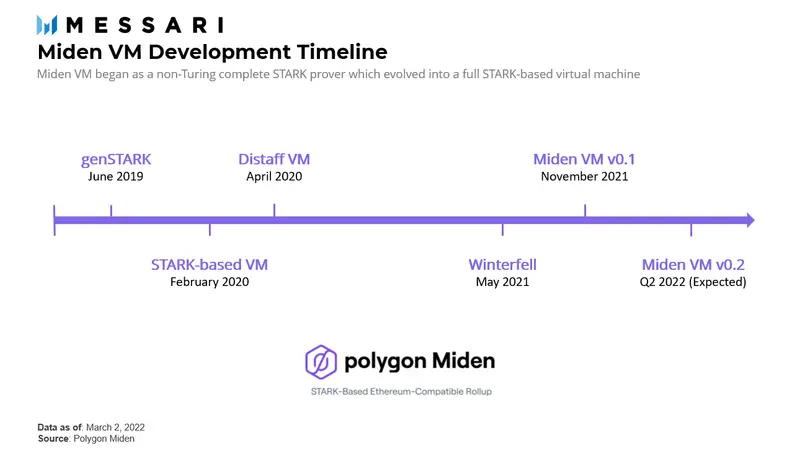
Miden VM 的发展始于 2019 年,当时是一个名为 genSTARK 的库,它允许开发人员创建简单的 STARK 证明者。 Distaff VM(早期基于 STARK 的 VM)和 Winterfell(genSTARK 的升级迭代)继续改进,例如完整的图灵完备。 Miden VM 的当前迭代是一个公开的 v0.1 原型,结合了 Distaff VM 和 Winterfell 的功能,并于 2021 年 11 月推出。有兴趣使用新虚拟机构建的开发人员可以试验该产品的功能。 v0.2 原型预计将在 2022 年第二季度发布。测试网开发应将项目持续到年底,之后预计将在 2023 年的某个时候进行主网部署。
正如 ZK Rollup 介绍中提到的,ZK Rollup 默认不提供隐私保护。这就是 Polygon Nightfall 的用武之地。Nightfall 是一个 Optimistic rollup,它通过 ZK 密码学的隐私优势得到增强。在这里,Nightfall 中使用的 ZK 加密类型与一般的 ZK Rollups 略有不同;前者用于促进数据隐私,而后者用于交易验证。 ZK 密码学与防欺诈Rollup背后的想法源于为企业提供差异化产品的需求,该产品在保持低交易成本的同时保留了 ZK 密码学的隐私元素。
Nightfall 最初由四大审计公司之一安永于 2019 年创建,作为在以太坊上进行私人交易的一种方式。这是一个重要的里程碑,因为它标志着大型企业首次积极参与以太坊的发展。此后几年,随着对隐私安全区块链的需求不断增加,安永开始寻找合作伙伴来帮助扩大产品范围。结果就促成了 Polygon Nightfall,这是 EY 和 Polygon 之间的合作,旨在创建面向公众的以隐私为重点的Rollup,使其成为企业的理想选择。
企业交易和运营工具从此类隐私功能中获益最多。Nightfall也将合法且符合 KYC 标准。合作的目标是创建可以访问网络的公司白名单;当企业进行交易时,需要在隐私安全交易完成之前提供确认访问的证据。
安永的企业客户已经可以通过安永前端门户连接到 Polygon Nightfall。 Nightfall 目前正在探索进一步扩展产品的方法。尚未为路线图设定具体时间表,但安永和 Polygon 都希望继续与其他企业特定的区块链合作。
Polygon Avail:以太坊数据可用性
Polygon Avail 是 Polygon 的两大架构产品中的第一个。 Avail 旨在解决节点在处理恶意或不完整数据时面临的挑战。在区块链世界中,这些挑战被称为数据可用性问题,也就是上面提到的导致研究人员放弃 Plasma rollup 计划的问题。发生此问题的常见情况包括节点接受数据不完整的区块或节点无法验证网络中交易数据的准确性(即区块链审查)时。
Polygon 将 Avail 描述为跨多链以太坊生态系统的数据可用性问题的解决方案。 Avail 是专为独立链、侧链和其他扩展技术设计的数据可用性特定区块链——这意味着整个 Avail 链旨在存储以太坊“调用数据”跟踪对以太坊状态机的更改。Avail 上不会部署智能合约,也不会构建应用程序。相反,Avail 存在的全部目的是对数据进行排序和存储,以确保数据仍然可以被轻客户端节点执行的采样过程访问。
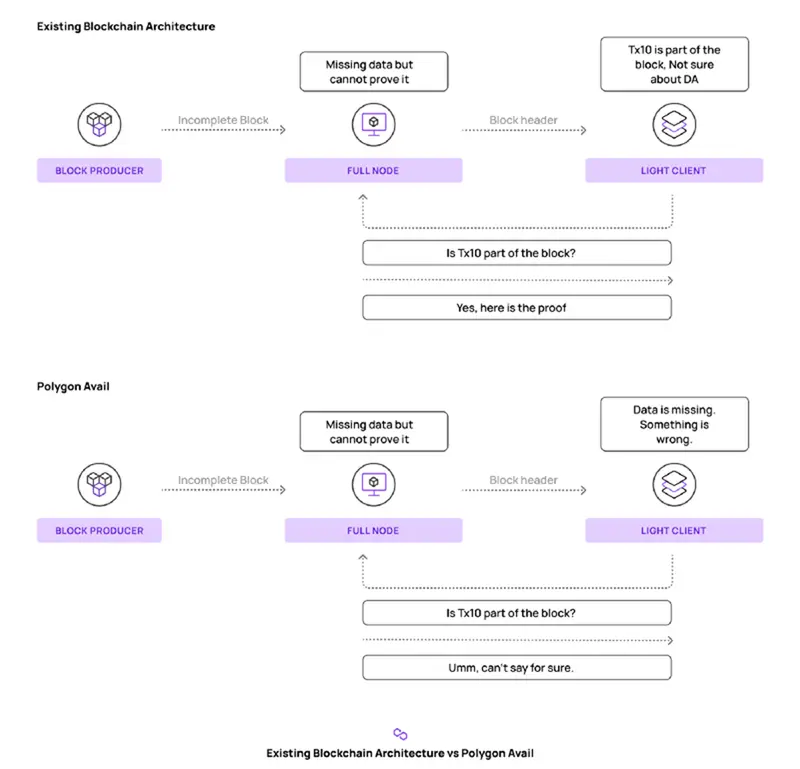
与当前的区块链架构相比,Avail 网络将专注于确保发布完整的交易数据,而不是验证状态变化。 与全节点不同,轻节点不会下载整个区块数据,而是优先从每个区块中随机抽取一组数据来评估完整性。 此过程称为数据可用性检查。 这是其他数据可用性平台共享的技术,无论数据规模如何,都可以以恒定的资源成本完成。
在其最终形式中,Polygon 设想了一个场景,开发人员可以创建自己的独立 PoS 链并将网络安全外包给 Avail。 独立链上的运营商会将交易发送到 Avail 进行排序和存储。 这有助于立即引导网络安全,因为完整的交易数据被保存在链下以便于访问。
Avail 目前仍在开发中,Polygon 团队尚未宣布关键路线图日期。
Polygon Edge:以开发者为本
Polygon Edge 以前称为 Polygon SDK,是一个开源模块化区块链开发框架,专为想要创建自己的区块链的工程师构建。 该框架允许创建安全链(第 2 层区块链)和独立的以太坊侧链。
两种选择都有各自的优势。 安全链提供两个独特的功能:为资源有限的人轻松引导,以及在与主网分开的层上增强安全性。 没有资源来引导安全性的新加密协议或希望在自己的网络上提高交易吞吐量的企业可能希望利用边缘框架来构建安全链。 同时,侧链需要自己的验证器集,非常适合希望最大化独立性的企业或能够支持自己的去中心化区块链的基于社区的网络。
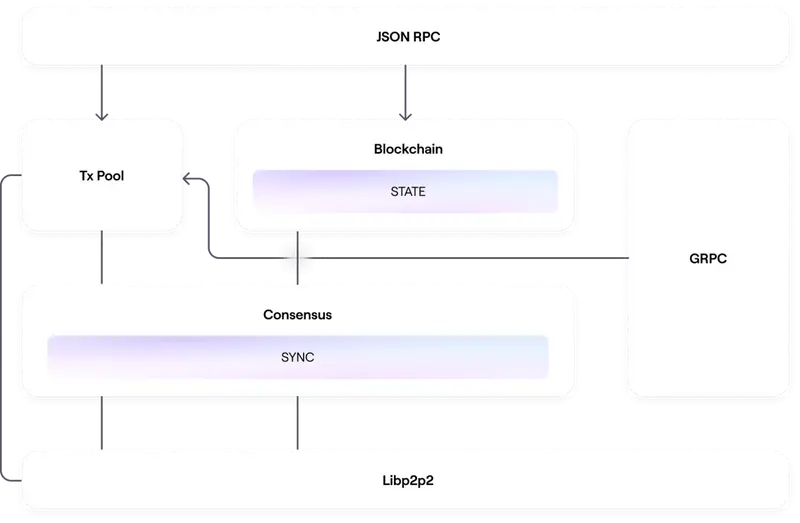
来源:Polygon Edge
a上图代表了开发框架的各个组件。 每个组件,包括区块链和共识等已知模块,以及 Libp2p、GPRC 和 JSON RPC 等更模糊的模块,都代表了技术架构中的功能。 开发人员能够修改这些模块以满足他们的需求,将它们像构建块一样组合起来以构成网络。 Polygon Edge 同时支持 Proof-of-Stake(PoS) 和 Proof-of-Authority(PoA) 作为共识算法。
独立链框架的 Edge 于 2021 年 5 月开始推出。安全链框架的第二次迭代预计将在不久之后进行。 Polygon Edge 等产品与 Polygon 关于更先进的多链以太坊生态系统的论点紧密结合,有助于解决关于 L2 通信和简化项目部署的迫切需求。
Polygon企业基金
如前所述,该公司还积极鼓励协议使用支持 Polygon 的网络。直接策略包括投资创始人团队,为项目代币经济学提供支持、质押、治理,以及利用 Polygon 网络进行营销活动。
生态系统伙伴关系
Polygon的一项战略努力是与加密社区内活跃的风险投资者合作。 Polygon 与四个组织保持着关系,不过该公司没有投资资本的决策权。
Polygon x Wintermute:与 2000 万美元基金合作,以支持项目流动性、业务发展和代币交易所上市目的
Polygon x 776:与投资 Web3 和其他加密原生应用程序的 2 亿美元通用基金合作
Polygon x Outlier Ventures:基于 Polygon 的加速器,旨在促进与 Outlier Ventures 风险团队的指导和合作
Polygon x StableNode:与在提供质押、治理等实践服务方面经验丰富的区块链节点管理运营商合作
Polygon生态系统基金
该公司的最终企业发展团队是其生态系统基金。 与上述合作伙伴不同,这个生态系统基金是 Polygon 自己的内部投资基金。 资本分配决策的战略设计旨在促进 Polygon 区块链的采用。
这个价值 1 亿美元的生态系统基金管理着 Polygon 的所有企业投资。 这包括与下面的 Polygon Studios 团队的联合投资。 到目前为止,该基金已支出 1500 万美元用于 50 个全球项目。 团队仍在积极寻找投资机会。
Polygon Studios
2021 年夏天,Polygon 推出了Polygon工作室(Polygon Studios),其内部部门旨在吸引现有游戏玩家参与区块链游戏。 Polygon Studios 与雄心勃勃的 NFT 项目和市场合作,在低成本平台上扩展用户群。
已有超过 100,000 名游戏玩家和 500 多个应用程序加入。该团队已宣布与 The Sandbox、Decentraland 和 OpenSea 等加密原生项目以及 DraftKings、Electronic Arts 和 Atari 等传统娱乐品牌建立合作伙伴关系。生态系统基金的资金也将用于投资有利于公司 NFT/游戏计划的项目。
负责领导 Polygon Studios 的是 Ryan Wyatt,他离开了之前在谷歌的职位,曾担任谷歌游戏合作伙伴主管和 YouTube 游戏主管。 Wyatt 以游戏评论员的身份开始了职业电子竞技的职业生涯,这使他具有领导 Polygon Studios 工作的独特资格。
社区内的领导
除了在全球加密社区中享有盛誉之外,还必须关注 Polygon 在印度加密社区中的作用。 该公司作为印度初创独角兽的地位有助于在怀疑者的眼中验证该行业,并鼓励该国更多的年轻人尝试加密货币。 鉴于印度政府与该行业的冷热关系,这种以身作则的领导形式特别有利于该国蓬勃发展的生态系统。
Polygon 在投资其社区方面也发挥了积极作用。 Polygon 经常在印度赞助、指导和评判黑客马拉松。 它与 ETHIndia 密切相关。 此外,该公司还与学生合作,提供智能合约应用工程课程,并与数家 IIT 机构、IT Mumbai 和其他精选印度大学的区块链俱乐部合作。
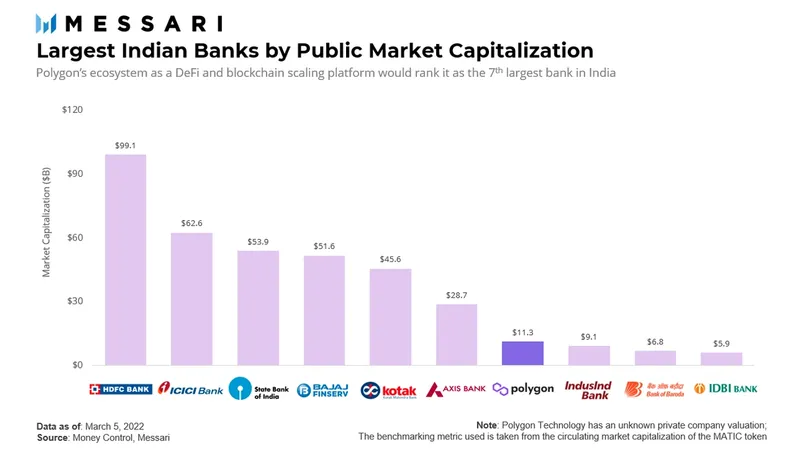
为了展示 Polygon 作为金融平台的地位,我们可以将该公司的估值与印度最大的银行进行比较。 按照这种方法,Polygon 将成为第七大金融机构。 当然,这种类型的分析有一些主要的警告。 一方面,Polygon 不提供直接的金融服务,更多地作为金融支付平台运营。 此外,这家初创公司的生态系统包括间接金融用例,例如 NFT 和区块链游戏。 也就是说,这种快速简单的比较确实突出了 Polygon 的崛起速度以及投资者对公司向前发展的期望水平。
路线图
Polygon 团队未来几年的大部分工作重点是企业而非技术,这可能表明团队对其产品套件的状态有多满意。随着每种产品继续研究、测试或推出自己的扩展解决方案,将更加重视寻找合适的合作伙伴和协议以集成到 Polygon 的产品网络中。
在公开采访中,Polygon 表示有兴趣重组公司的团队结构并扩大与加密项目的合作伙伴关系,特别是在 NFT 和游戏领域。预计员工人数还将继续增长,目标是到年底将员工人数增加一倍。尽管每个团队组织的确切细节尚不清楚,但需要注意的是,Polygon 希望集中关键领导层,同时保持每个团队的分散自治。
对于投资者来说,最激动人心的更新之一将是代币重新设计。当前的 MATIC 代币是旧 Matic 业务的遗留物,可与 Matic 的网络 Polygon PoS 一起使用。未来的代币将有一个新的代码,并适用于所有 Polygon 产品。鉴于我们今天所知道的,用例可能包括Staking以增强安全性或选择区块链运营商。有趣的是,代币并非对所有用户都是强制性的,这意味着不需要购买、质押或持有;对于许多用户来说,它可能只是后台的东西。尽管时间尚不清楚,但 Bjelic 表示希望在 2022 年的某个时候完成代币的重新设计。
结论
未来几年将在区块空间方面竞争激烈。最终的优胜者将通过确定哪个具有最佳易用性、交易速度和交易成本来决定。区块链发展的下一阶段意味着核心基础设施现在比以往任何时候都更加重要。世界各地的用户需要一个能够与 Visa 和 Mastercard 相媲美的网络,这种处理类型可以每秒处理数千笔交易。
Polygon 正在努力通过其Rollup解决方案套件来满足需求。其积极的 2021 年增长战略,通过收购和加入不同的 ZK 项目,现在确保 Polygon 的产品组合为每个人提供一些东西。如果用户想要更快或更私密的交易,可以选择 Hermez、Miden 或 Zero;如果企业正在寻求隐私,那就是夜幕降临;如果开发人员正在寻找扩展解决方案,Avail 可以减轻数据可用性的负担,而 Edge 则有助于完全构建新的区块链。
这套产品为 Polygon 提供了一条重要的护城河。只要它可以将项目吸引到其平台上,Polygon 将在未来几年继续保持行业的大参与者地位。

